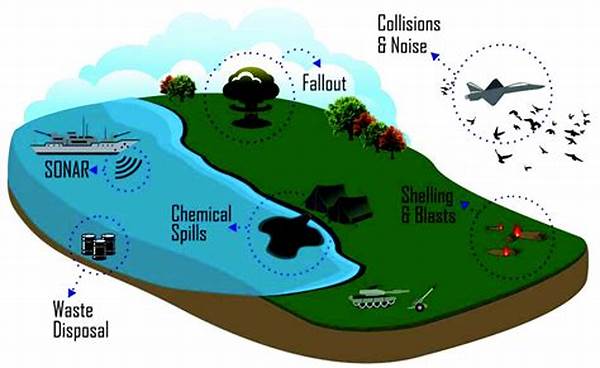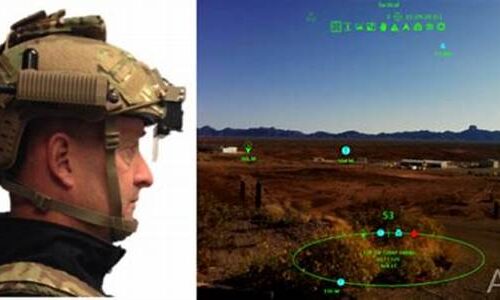The interaction between natural habitats and military activities presents a complex dynamic, marked by both conflict and cooperation. As military objectives often require extensive use of land and resources, their operations can pose significant challenges to the preservation of natural habitats. This article explores the multifaceted relationship between these two realms, examining the implications of military activities on ecosystems and proposing possible pathways for harmonious coexistence.
The Balance between Conservation and Defense
Natural habitats provide essential ecological services, such as biodiversity, air and water purification, and climate regulation. However, military activities can disrupt these habitats, leading to habitat degradation and loss. It is critical to strike a balance where military necessities are met while minimizing harm to the environment. By implementing sustainable practices and strategic planning, military operations can reduce their ecological footprint.
In some instances, military zones have inadvertently become protected areas due to restricted human activity, resulting in conservation benefits. These areas provide valuable insights into ecosystem preservation in the context of human disturbance. Nevertheless, active military engagements, training exercises, and infrastructure development can have adverse effects, necessitating thorough environmental assessments and mitigation strategies. Establishing clear guidelines and collaboration between conservationists and defense authorities can help align objectives towards sustainable outcomes.
Environmental Impact of Military Presence
1. Military activities can lead to habitat fragmentation, affecting the biodiversity within natural habitats.
2. Efforts to mitigate environmental damage from military activities include employing less invasive technologies.
3. Military training exercises often lead to pollution, challenging the integrity of natural habitats.
4. International cooperation is essential to address the environmental implications of global military activities.
5. Restorative projects aim to reconcile damaged natural habitats with ongoing military operations.
Navigating Environmental Policies and Defense Needs
The interplay of natural habitats and military activities necessitates comprehensive environmental policies that address defense requirements. Policymakers must design frameworks that integrate environmental considerations into military operations at all stages, from planning to execution. The support of technological advancements can facilitate the implementation of eco-friendly practices, reducing potential ecological harm.
Military institutions are increasingly recognizing the need to participate in conserving natural habitats as part of their operational ethos. Environmental stewardship programs are being developed to educate military personnel about the importance of biodiversity and sustainability. Such initiatives promote awareness and action, aligning military activities with broader ecological goals. By fostering a culture of responsibility, the military can contribute positively to both national defense and environmental preservation.
Challenges and Opportunities in Conservation
1. Decommissioned military sites offer opportunities to restore natural habitats.
2. Modern warfare technologies reduce physical environmental footprints during military activities.
3. Despite challenges, collaborative efforts can enhance the coexistence of natural habitats and military activities.
4. Environmental monitoring is critical to identify and address the impacts caused by military presence.
5. Public awareness campaigns can support conservation efforts in military-influenced regions.
6. Synchronized efforts between environmentalists and military planners are essential.
7. Research on ecological resilience is integral to managing the effects of military activities on natural habitats.
8. Regulatory frameworks need continuous updates to reflect environmental priorities.
9. Military organizations can play a pivotal role in habitat rehabilitation efforts.
10. Cross-sector dialogue reinforces commitments to environmental and defense goals.
Reconciling Development with Environmental Stewardship
The sustainability of natural habitats in the face of expanding military activities depends on reconciling development goals with environmental stewardship. Developing strategic impact assessments and environmental review processes ensures that ecological and defense priorities are both addressed. Technological advancements in eco-friendly defense solutions are essential to minimize adverse effects on the environment.
Military operations must commit to sustainable practices and continually assess their impact on natural habitats. Collaboration with environmental organizations and governments worldwide fosters a shared responsibility towards planetary conservation. Together, these efforts can shape a future where military activities are conducted with a greater understanding of their ecological impact, maintaining the delicate balance necessary for both national security and environmental health.
Future Directions for Sustainable Coexistence
As global environmental challenges continue to escalate, the importance of harmonizing natural habitats with military activities grows. Future policies must focus on innovation and collaboration to resolve conflicts between ecological and defense objectives. Investment in research and development can lead to more sustainable military technologies, advancing the efforts to protect ecosystems.
A comprehensive understanding of the interactive dynamics between natural habitats and military activities will aid in crafting adaptive strategies. Encouraging dialogue among stakeholders, including environmentalists, military planners, and policymakers, is vital. Such collaboration can guide the creation of robust frameworks that support environmental conservation while meeting defense needs. The goal should remain a sustainable coexistence that benefits both ecological systems and military operations.
Conclusion: Pathways to Harmonization
The relationship between natural habitats and military activities necessitates a nuanced approach characterized by ongoing dialogue and cooperation. While military operations are imperative for national security, their impact on natural environments must be carefully managed. Through collaborative efforts, enhanced environmental awareness, and strategic policy implementations, it is possible to achieve a balance where both goals are met.
In conclusion, the future of natural habitats in the context of military activities hinges upon adaptive management and technological innovation. Substantial progress can be made through cross-sector partnerships that prioritize sustainability and security. Ultimately, integrating ecological and military objectives is not only beneficial but essential for preserving the planet’s biodiversity and maintaining peace.





